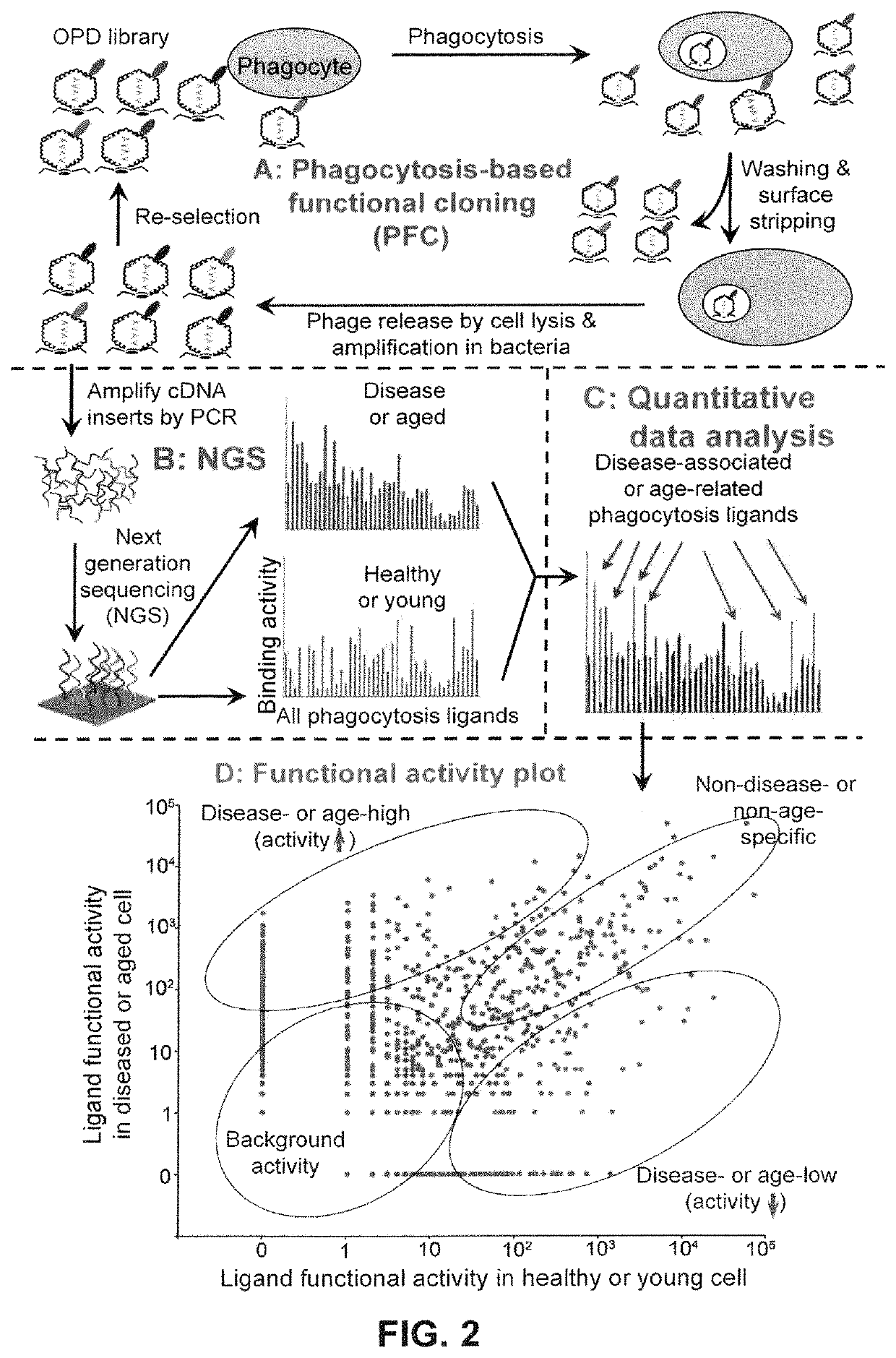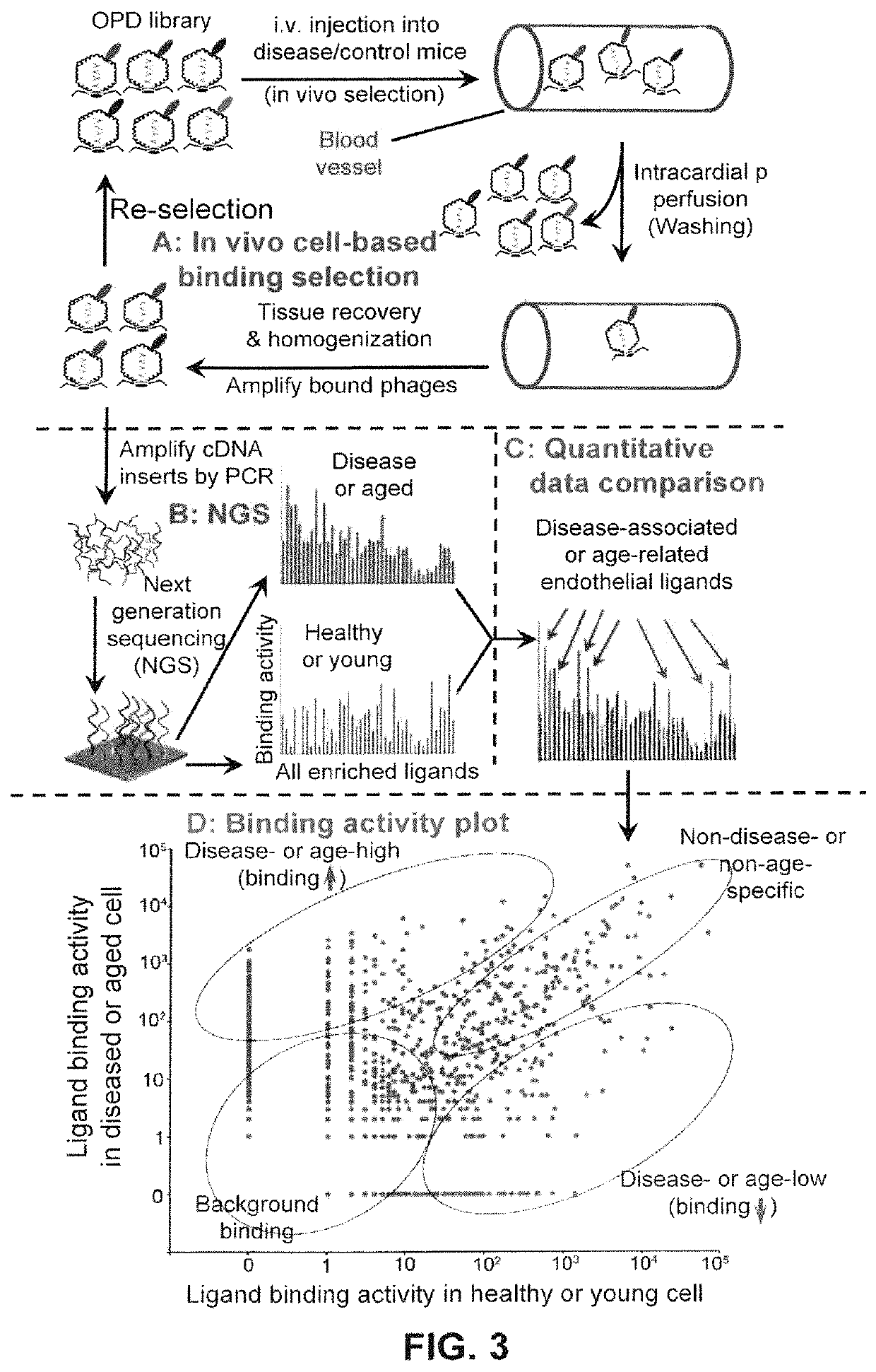Quantitative ligandomics for systematic identification of therapeutic ligands
a ligand and quantitative technology, applied in the field of quantitative ligandomics for systematic identification of therapeutic ligands, can solve the problems of inability disease-specific ligands, age-related ligands or receptor-specific ligands for therapy, and inability to use conventional phage display to efficiently identify cellular ligands, etc., to achieve the effect of facilitating new ligand-based therapies
- Summary
- Abstract
- Description
- Claims
- Application Information
AI Technical Summary
Problems solved by technology
Method used
Image
Examples
example 1
Systematic Identification of Diabetes-Specific Endothelial Ligands
[0038]Diabetes affects ˜25.8 million people in the U.S. or 8.3% of the population. Diabetic vascular complications (DVCs), such as heart attacks, atherosclerosis, diabetic retinopathy (DR), diabetic nephropathy, diabetic neuropathy and diabetic foot, are the major causes of morbidity and mortality of diabetes. DR is a leading cause of vision loss in working adults, affecting ˜7.7 million people in the U.S. Nearly all individuals with type 1 diabetes and more than 60% of individuals with type 2 diabetes have some degree of DR after 20 years of diabetes onset. About one third of the diabetic population have signs of DR, and approximately one tenth have vision-threatening retinopathy, such as proliferative DR (PDR) and diabetic macular edema (DME).
[0039]DR is characterized by increased vascular permeability, endothelial apoptosis, acellular capillaries, leukocyte adhesion, late-onset angiogenesis, retinal bleeding and vi...
example 2
Systematic Identification of Cancer-Related Endothelial Ligands
[0057]In another example to illustrate the embodiment of the invention, ligandomics was applied to cancer-bearing mice to systematically identify cancer-specific endothelial ligands in an in vivo setting.
[0058]Angiogenic factors play an important role in regulating blood supply to growing cancer. A number of angiogenesis factors and inhibitors have been identified. Several of them have been approved by FDA for anti-angiogenesis therapies of cancers, such as anti-VEGF therapy. Owing to technical difficulties, all endothelial ligands are traditionally identified and characterized for their cancer relevance on a case-by-case basis with technical challenges. As a result, it is unclear how many cancer-associated endothelial ligands are yet to be identified and which one is particularly relevant to a specific cancer. The knowledge gap hinders our capability to develop new ligand-based cancer therapy. Herein one of the embodime...
PUM
| Property | Measurement | Unit |
|---|---|---|
| body weight | aaaaa | aaaaa |
| permeability | aaaaa | aaaaa |
| fluorescence dye | aaaaa | aaaaa |
Abstract
Description
Claims
Application Information
 Login to View More
Login to View More - R&D
- Intellectual Property
- Life Sciences
- Materials
- Tech Scout
- Unparalleled Data Quality
- Higher Quality Content
- 60% Fewer Hallucinations
Browse by: Latest US Patents, China's latest patents, Technical Efficacy Thesaurus, Application Domain, Technology Topic, Popular Technical Reports.
© 2025 PatSnap. All rights reserved.Legal|Privacy policy|Modern Slavery Act Transparency Statement|Sitemap|About US| Contact US: help@patsnap.com



